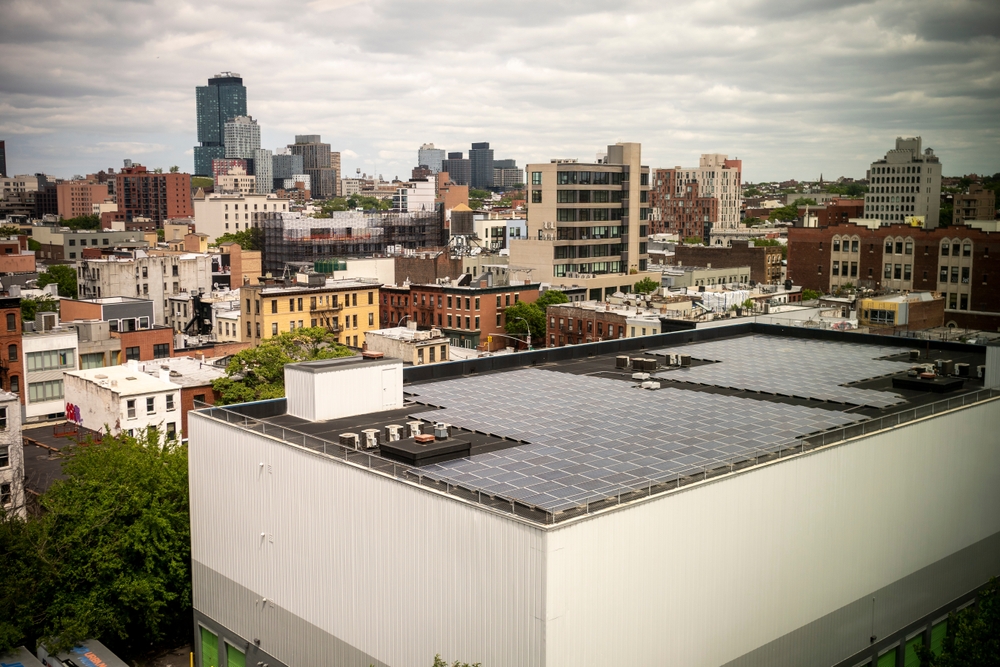
New York’s distributed solar industry had a record-setting 2024 with 1.24 GW installed, 40% more than any year prior. However, solar advocates say a slowdown may be imminent, and the Trump administration’s energy policies are only part of the problem.
“It’s highly unlikely we’re going to see these types of peak installation numbers again, unless there is meaningful policy intervention,” said Daniel Montante, president of Montante Solar and board president for the New York Solar Energy Industries Association.
New York has been a key state in advancing distributed energy resources, pioneering sophisticated policies and incentives that have helped increase distributed solar every year since 2012. The industry has been moving so fast that in the last two years alone, it added capacity equivalent to the state’s largest power plant, the 2.2 GW Niagara Power Vista. As a result, it met a 6 GW state mandate for distributed solar one year early.
So why does NYSEIA envision a slowdown?
Last year’s numbers are a lagging indicator, born out of market conditions of three or four years ago when the projects were initiated, according to Montante, who spoke at a recent NYSEIA webinar.
Data shows newer distributed solar projects weighted down by interconnection costs and permitting challenges, according to the organization.
NY distributed solar by the numbers

- 242,056 projects, over 6.5 GW
- Employs 15,490 workers
- $10 billion in private sector development
Poor market conditions can take years to affect installation numbers because of the lag time in project development. NYSEIA traces this year’s expected slowdown to 2022, when fewer projects began launching into development because of high interest rates, inflation, declining state incentives, and fixed charges on solar customers’ utility bills.
Noah Ginsburg, NYSEIA executive director, said community solar has grown strongly in the state, but commercial rooftop installations remain an untapped market.
He attributed underperformance to various factors, including interconnection costs, which he said have “gone through the roof.”
“If we look back just five years ago, the average estimated cost to interconnect a new project was about $200/kW/kW-AC. Now it’s five times that,” he said. This is causing projects to withdraw from the interconnection queue.
The problem? Constraints on the grid inhibit its ability to host distributed energy, driving up costs. Solving the problem requires “some pretty expensive upgrades to the distribution system,” he said.
Subscribe to the free Energy Changemakers Newsletter
NYSEIA also noted that pairing solar with energy storage remains low in New York, just below 5%, and only 1% in New York City for residences because of the city’s ban on home batteries. Battery installation is strongest in areas of the state that have time-of-day rates, capacity-based incentives and virtual power plant programs.
The state is on track to reach its goal of 10 GW of distributed solar by 2030, and NYSEIA wants lawmakers to set a new mandate — and accompanying policies — to achieve 20 GW by 2035.
Policy changes that could help
Opportunity for policy changes may come as the state’s Department of Public Service reviews the Clean Energy Standard (Docket No. 15-E-0302) to fix the state’s projected 42,145 GWh shortfall in achieving its overall renewables goals. Ginsburg said distributed solar can help close the gap.
Other policy reforms NYSEIA is pushing include:
- Reinvestment in the NY-Sun capacity-based incentives for rooftop and community solar projects, which is largely depleted.
- Action by state regulators on a pending implementation plan for residential and business energy storage incentives.
- Improvements to the state’s value of distributed energy resources tariff to include avoided transmission costs
- Decisions in the Grid of the Future docket Case 24-E-0165 ,which looks at ways to use demand flexibility to meet the state’s forecasted power needs
- Changes to New York’s Standardized Interconnection Requirements that reform cost-sharing payments, improve technical screening and study schedules
- Expansion of flexible interconnection, which Ginsburg said by some estimates could double grid capacity at limited cost
And then there is Trump
The organization also is concerned about threats to the 30% federal solar tax incentive by the Trump administration, which Ginsburg said would have “immense implications not just for New York but across the country.”
“All that being said, there’s so many things that can be done right here in New York state by our legislators and regulators to move the needle,” Ginsburg said. “Leadership is really desperately needed right now.”
Go big or go home on distributed solar development
Montante called 2025 “a go big or go home year” for distributed solar.
“We need legislators and policymakers to recognize that the cheapest and quickest energy source to deploy today is solar electricity. If you think power rates are too high right now, the easiest way to fix that is to generate more power,” Montante said. “Distributed solar has the capacity to deliver more gigawatts, faster and cheaper than any competing power source. It is so much easier to build on our past success than to tear it down.”
